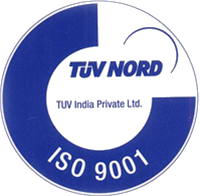Tried and Tested

Last weekend, my 2 kids, aged 10 and 6, decided that we ought to bake some chocolate chip cookies.
Now, I am no expert at baking. I have used my oven mainly to store my oversized cooking vessels rather than actually baking anything in it. Fearing that embarking on this ambitious project would only end up with a disaster in my kitchen, I tried valiantly to dissuade them with offers of a quick trip to the local bakery instead, to purchase their choice of goodies. “It is very difficult to bake cookies, let’s just go and buy them”, I pleaded. I don’t even think they paid any heed to my counter offer. When they started pulling out eggs and butter from the refrigerator, I gave up trying to stop this madness and instead decided to jump into it myself. It had been definitely decided that cookies had to be baked that afternoon. The least i could do was try and contain the damage by taking charge.
We did what was the obvious first and foremost important step — whip out the laptops and mobile phones and go searching online looking for that perfect recipe. After nearly an hour of heated debates based on comparisons of raw materials, final product specs, process complexities, turn around times etc., we settled on a tried and tested recipe that seemed to be well suited to novice bakers like ourselves.
What I really liked about this recipe –
- It was attractive with pretty pictures of yummy cookies.
- It listed, in details, the usual mistakes made and steps to avoid it.
- It had an FAQ section, with in depth question and answers so that the reader can better understand the context
- And of course, the step-by-step instruction that gave us confidence that we could do it.
- Most importantly, judging by the number of comments that this recipe had received, several people seemed to have tried it before. In addition to the comments, there were also suggestions and improvements that had been added to the original recipe.
And so we started off with a hustle and a bustle and after about 45 minutes of culinary adventures guided by our trusted recipe, freshly baked delectable soft brown cookies emerged from the oven.
I was pleasantly surprised to see that not only did the cookies appear to be perfect, they also tasted heavenly. Now I am not exaggerating for the sake of this article, the cookies actually tasted really really good. And each and every one of them came out a perfect brown with a soft chewy inside. To top it all, there had been absolutely no mishaps at all. My kitchen was safe and sound.
The skeptic in me was simply blown away.
A faithful adherence to the process document aka the recipe, was able to make bakers out of our motley crew. It had also given me the confidence now to take on the next baking challenge.
Aren’t an organisation’s process and procedure documents akin to that chocolate chip cookie recipe?
Just as the recipe guided us, walking us through every step of the process, an organisations’ process documents should also have the power to enable the team to get the job done. It should motivate people to try new things because they know where to look for the manual.
A larger organisation is probably more invested in creating and maintaining process documents, but the smaller ones typically tend to avoid this as an unnecessary overhead. But irrespective of the size of the company, a common collective understanding of the processes leads to better synchronisation within the team which is a much needed ingredient for growth.
Going by the cookie-baking experience, I would say that process documents should follow these golden rules –
- Visible and Accessible — The recipes that I even considered were only those that I was able to search online. There may have been others that were probably better, but of course, useless to me as I was not able to find them. Likewise, are your process documents clearly visible to your audience or tucked away in a secret drive that no one accesses?
- Tried and Tested — The best recipes are those that have been tried out numerous times and adjusted and upgraded each and every time. So also with process documents. They have to be put to use regularly and updated periodically for them to remain effective.
- Authored by the cook(s) — The cook creates his or her own recipes. Similarly, the people working on the process find some better ways of doing things and should be encouraged to become cooks and actively contribute to the documentation efforts.
- Keep it simple — The documents should not be daunting. Just like a simple recipe makes you feel, “Yes, I can do it”, likewise a process document should strive to keep things simple.
- Don’t make assumptions — What is obvious to a seasoned baker can confound someone else. Likewise, the process document should also not assume that its reader would know certain information prior.
Writing out a process document is certainly not an exciting task. But it is probably the most important one that should be undertaken. The benefits of a well documented process far outweighs the excuses that come up.
So go on! Take a look in your company’s recipe box to see if all recipes are being used, add some of your own touches and create a few more recipes of your own.


